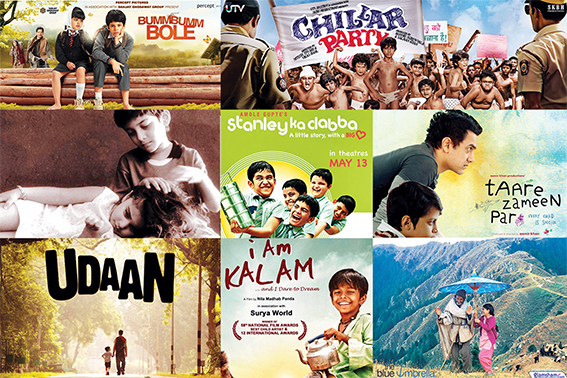Children’s Films in India
India & You
May-June 2017
The world’s second largest population belongs to India, with an estimated 30 pc of the 1.33 billion people under the age of 15. Also, India produces the most number of films in the world. Yet, there is hardly any notable tailor-made content being produced for children. Why don’t the numbers add up?
If diversity is the keyword of your query, chances are more than likely that India will feature highly on the list of responses. For a country as vast as India, with a heritage that is seldom paralleled, variety is a crucial asset. India’s sluggish economic growth has more often than not been blamed on the size of its population. But, when you couple the quantum of the workforce with the facts that almost seven people out of 10 fall in the age bracket of 15-65 and that India’s calling card is the variety it offers, it baffles that India is still an emerging country and not a superpower already. You may wonder why I choose to delve in demographics when the moot issue of this article is children’s films. In grander scheme of things, it’s generally the details which are turned a blind eye to. Hence, in this case, it’s of utmost importance that we analyse one such detail that seldom meets the eye. What is a children’s film, really? Is it a film that projects a child artist as the protagonist or at least as one of the pivotal characters of the film? Is it a story that revolves around a children-oriented topic? Or, does it have to be primarily educational? To say the least, these are sadly the accepted hallmarks of a children’s film in India.
A Question Seldom Answered
While looking for the answers to the aforementioned questions, I asked myself which those films were that I watched over and over again as a child, growing up in a country where satellite television was sparse, back in the 1990s. There were three films that readily came to mind. Goopy Gyne Bagha Byne (1969) by Satyajit Ray, Jurassic Park (1993) by Steven Spielberg and Jumanji (1995) by Joe Johnston. Add to that, the very popular Malgudi Days that used to be aired on national television. Later on, I loved The Polar Express (2004) as well. It’s another story that I had slipped into my teens by then. What made them stand out? The answer to that perhaps also answers the moot question. Children’s films perhaps have only one prerequisite, one that we overlook: the perception and treatment of the story has to be child-like. The storytelling has to be from a child’s point of view instead of telling a child’s story from an adult’s point of view. All the aforementioned films did a spectacular job of captivating children’s minds, triggering their fertile imaginations with enticing visuals and engaging representations.
India’s massive film market has produced a multitude of fine films in various languages, genres and sub-genres over the years. But, the one constant that has perennially haunted this land of bards is the over-reliance on tried-and-tested formulas of commercial success. And, this is a reflection of how the Indian society functions. The demand-supply curve is truncated to the point where it is safe to say that it is doctored.










